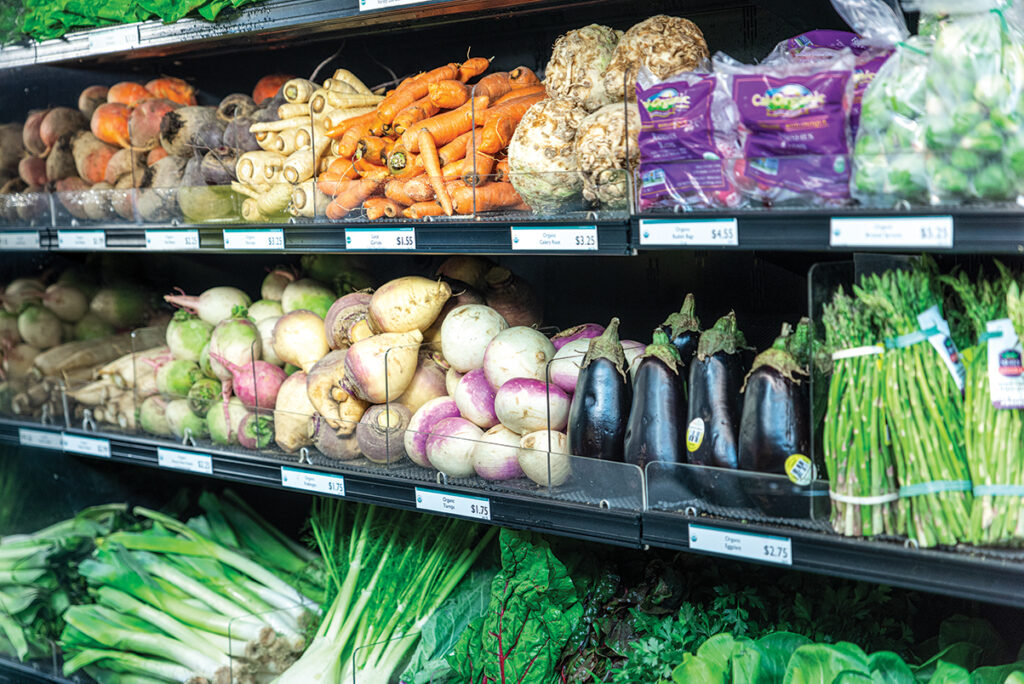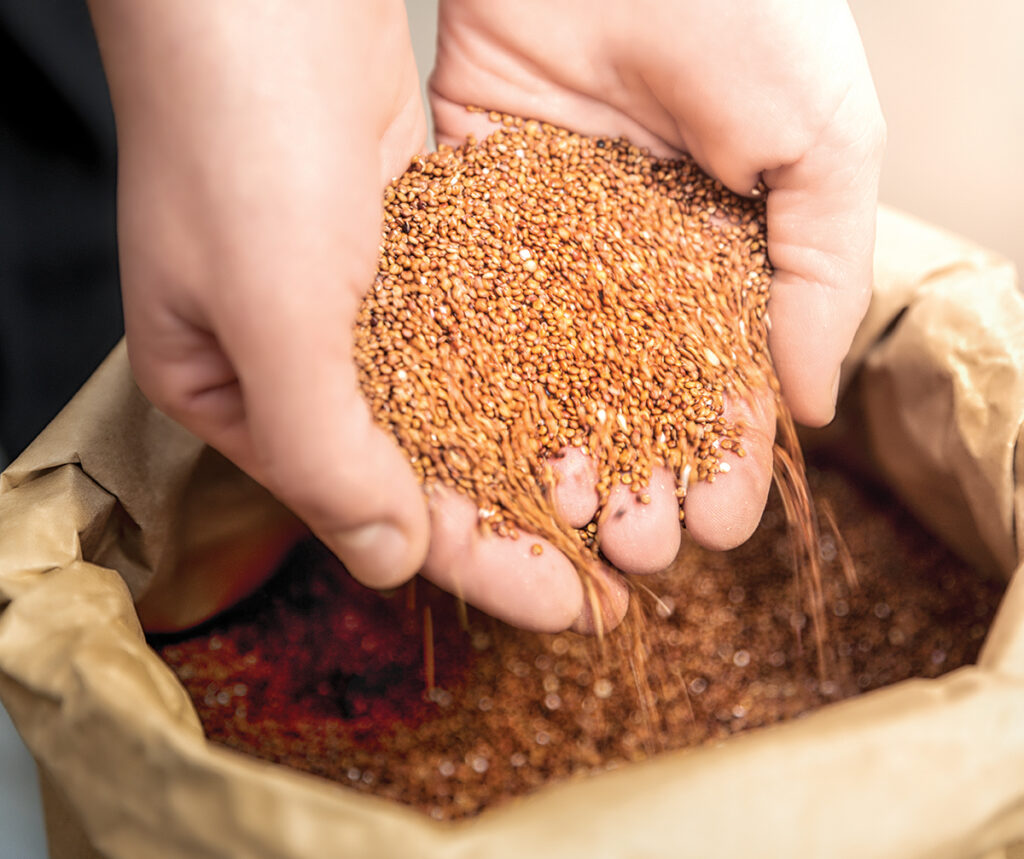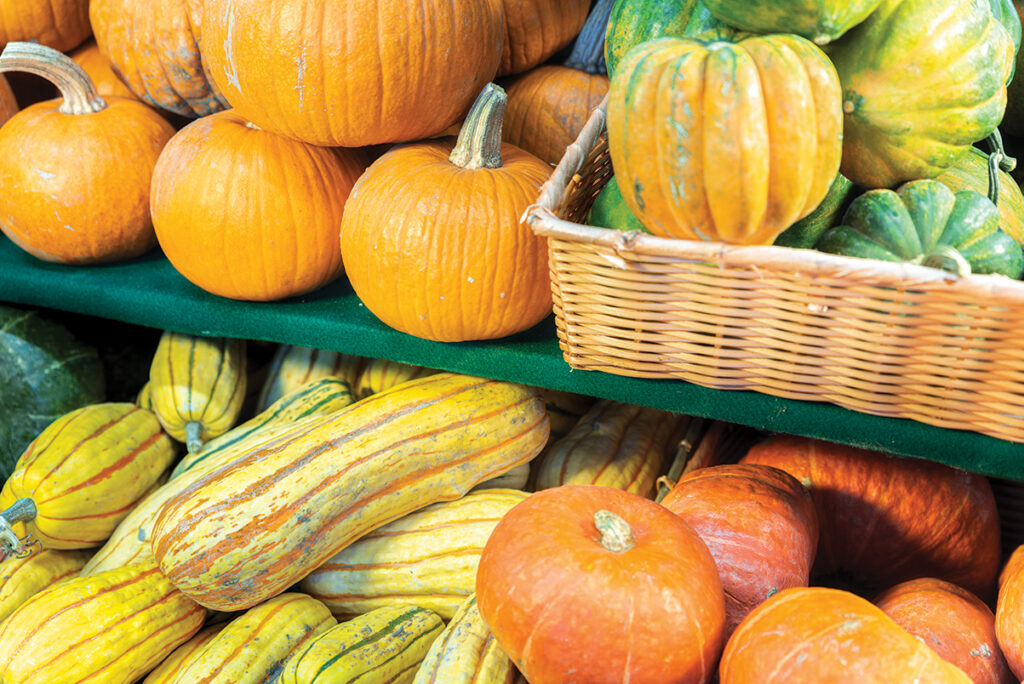Cooler weather comes with many names—the holiday season, furry boot season, time-to-move-south season—but one of the homiest is soup season. Everyone wants a warm, comforting bowl of goodness on a cold day. But a decrease in temperatures also brings an increase in our chances of getting sick. With a focus on quality time and family gatherings, nobody has time to feel ill this time of year. Luckily, we can help ward off that next cold or onset of the flu by adding a veggie or sprinkling a new spice on dinner.
What exactly is a superfood? Essentially, any food that contains a high level of vitamins and minerals can fall into this category. They help our bodies run at their best, no matter the season. Theresa Ferdinand, the Manager of Employee Health and Wellbeing for Monument Health, says “Nutrition is key, not only in preventing and treating chronic conditions, but in being able to be at your peak and perform all day long.”
Fresh, Frozen, or Fried?
A good rule of thumb is to eat superfoods as close to their natural state as possible, but cooking them won’t remove their nutritional value. Avoid frying or grilling if possible, and stick to simmering, stewing, or baking. This applies to processing as well; frozen produce loses little of its nutritional value and keeps much longer. Theresa cautions “When choosing canned foods, beware of the salt content with vegetables and the sugar content with fruit. Look for products with no salt or sugar added. Fresh or frozen are your best options.”
All About the Vegetables
Unsurprisingly, a lot of superfoods are fruits and vegetables, since they naturally supply an array of nutrients. Orange and red vegetables are an easy go-to this time of year, as they have high levels of Vitamin A and C, and immunity-boosting beta-carotene. Carrots, squash, and tomatoes are all good additions, and versatile enough for almost any dish. Starting a family garden is a great way to get your kids involved and have fresh produce for next year! Grains are also a common superfood, if you stay away from highly processed or bleached versions. Brown rice, oatmeal, and quinoa are great options, since they have high levels of zinc, iron, and even protein.


Bring on the Protein
When adding meat to your meal, the easiest way to maximize your benefit is to select products that were fed as close to their natural diet as possible. Look for labels such as grass-fed or wild-caught as a starting point. Seafood tends to be healthier than other types of meat, and salmon is an especially great choice. It is one of the few dietary sources of vitamin D, which is tough to come by in the winter months.
Spice it Up!
A convenient way to add a little extra to a meal, or even a drink, are spices. Cinnamon is popular this time of year, and adding it to recipes can help lower blood sugar and cholesterol. Turmeric is another common spice with a host of benefits, as it reduces inflammation, and may even improve your memory. For the brave at heart, adding some cayenne or chili pepper to recipes can boost your metabolism—just be careful, using too much can cause nausea or pain in sensitive tummies.
Life is Short, Eat Dessert
For those of us with a sweet tooth, eating healthy doesn’t mean you have to give it up altogether. Even making a couple substitutions to a standard baking recipe can up the ante! Trading out half of your white flour for coconut is a great way to add fiber, or use almond flour to add magnesium. Likewise, trading milk chocolate for dark adds antioxidants and zinc, which are great immunity boosters. Finally, pumpkin is a perfect base to any fall or winter dessert, and is full of zinc, fiber, and vitamin C. Its health benefits are dense enough you can still put that dollop of whipped cream on top guilt-free!
Tips for Picky Eaters
While all of these superfoods are great for our health, they only count if they’re actually eaten. So how do you get your kids to try something like turmeric or pumpkin? Here are a couple tips to convince your kids to at least give it a shot:
- Offer choices. Even a choice between two healthy options lets kids feel like they have a say. This works simply because kids are constantly fighting for independence and autonomy, so giving them options can make them feel in charge—even if it’s between carrots or peas.
- Let them see behind the scenes. Take them to farmers markets to see a variety of new produce and find recipes to try them. Sourcing locally is also a great way to make sure your family’s food is fresh while supporting small businesses.
- The Mayo Clinic recommends asking what kids want for meals when you make your grocery list, or letting them help with basic cooking prep like measuring ingredients. Having them be a part of the process makes them more interested in the end product.
- Try camouflaging the healthy food. An easy one to start with is adding sweet potatoes to mac and cheese; it’s a favorite dish kids are more likely to eat, while the cheese does wonders to cover the taste and color of the potatoes. Once they take to the new ingredient, try it in other recipes that showcase it more.
- If all else fails, remember not to force the issue. While it can be frustrating, letting your child guide the conversation leaves foods open for exploration later. Trying to force something can cause resentment to both the food and the process.


Stocking Your Pantry
So what are some easy-to-find superfoods you can start incorporating into your family’s meals? Here is a list of some of our favorites!
Fruits and vegetables:
- Carrots
- Garlic
- Fennel
- Berries (blueberries, strawberries, etc.)
- Pumpkins and their seeds
Grains:
- Oatmeal
- Brown rice
- Quinoa
- Millet
- Buckwheat
Spices:
- Turmeric
- Cinnamon
- Cayenne or Paprika
- Ginger
- Cardamom
Proteins:
- Eggs
- Oily fish, such as salmon or sardines
- Greek yogurt
- Almonds, pine nuts, and peanuts
- Grass-fed beef
Bonus: click here for one of our favorite recipes that uses several of these ingredients!
No matter what your current meal rotation is, don’t try changing things up completely. Small, easy to manage adjustments are better than attempting to change your entire lifestyle. Theresa notes, “I wish we could convince people to not think about things as ‘a diet.’ People go on this diet, that diet, or whatever. Focus instead on healthy eating and making good food choices.” Add a few of our suggestions to your daily routine, or make healthy substitutions where it’s easy, and you’re more likely to reap the benefits of superfoods in your daily life.
WORDS: ASHLEY JOHNSON
PHOTOS: JESSE BROWN NELSON

